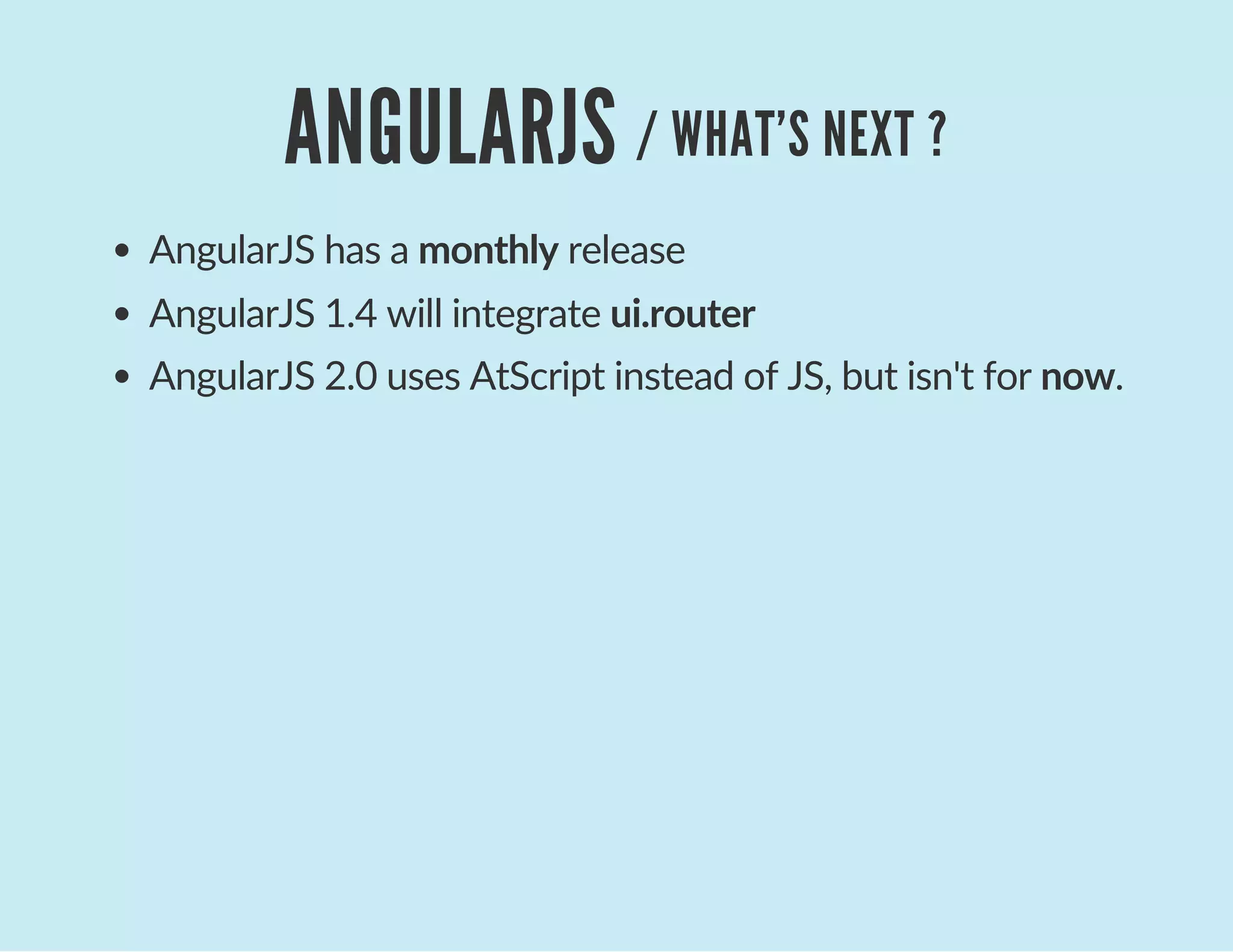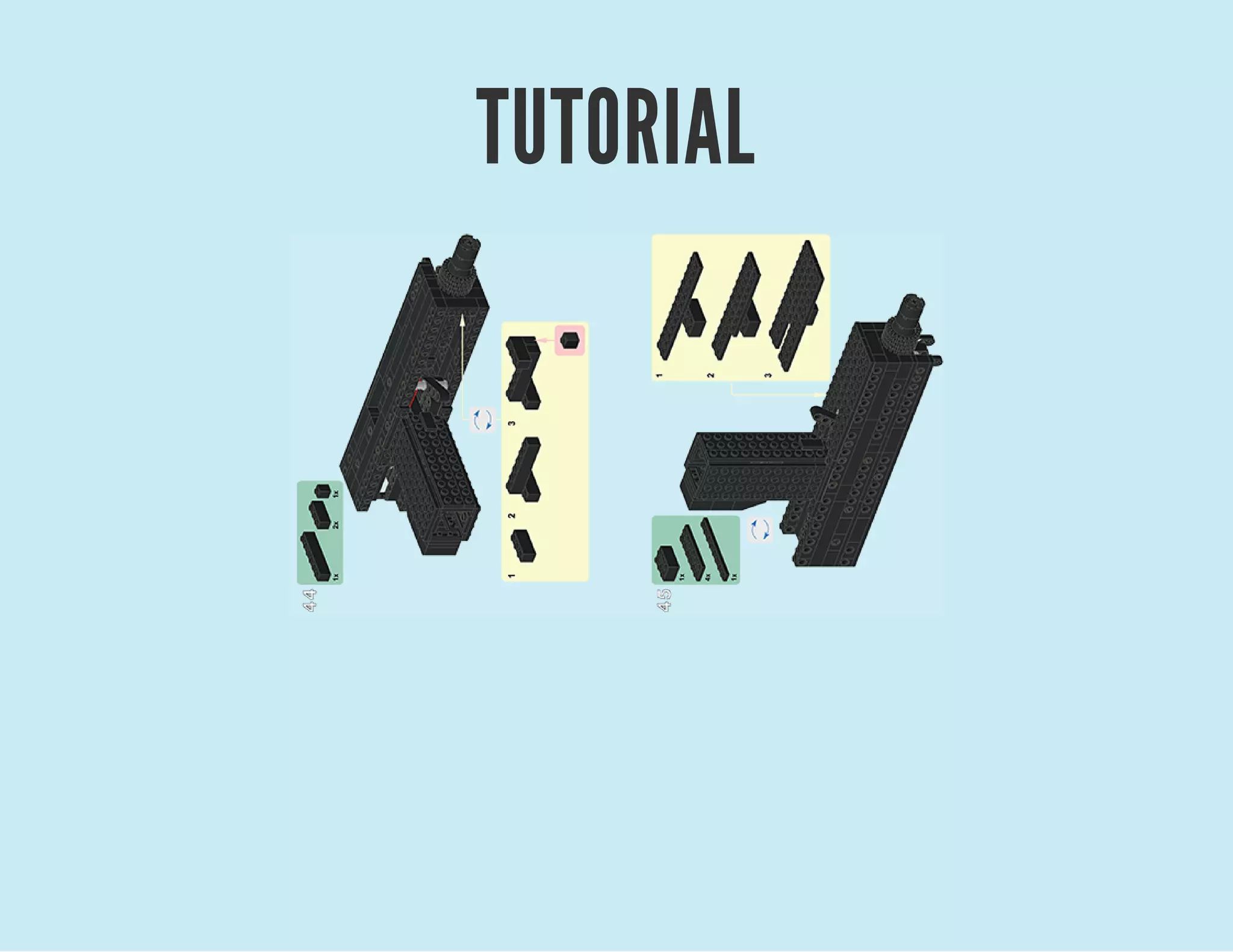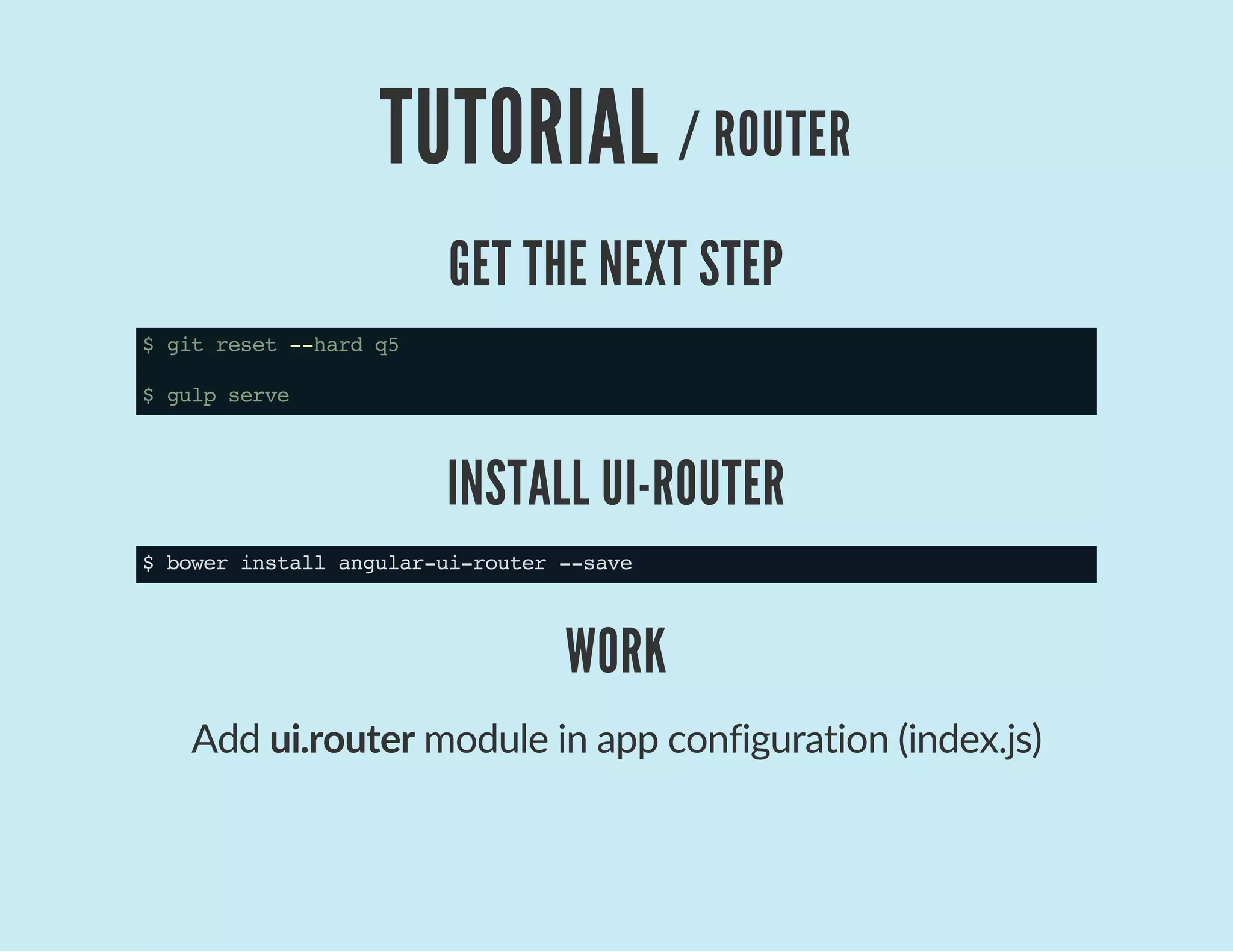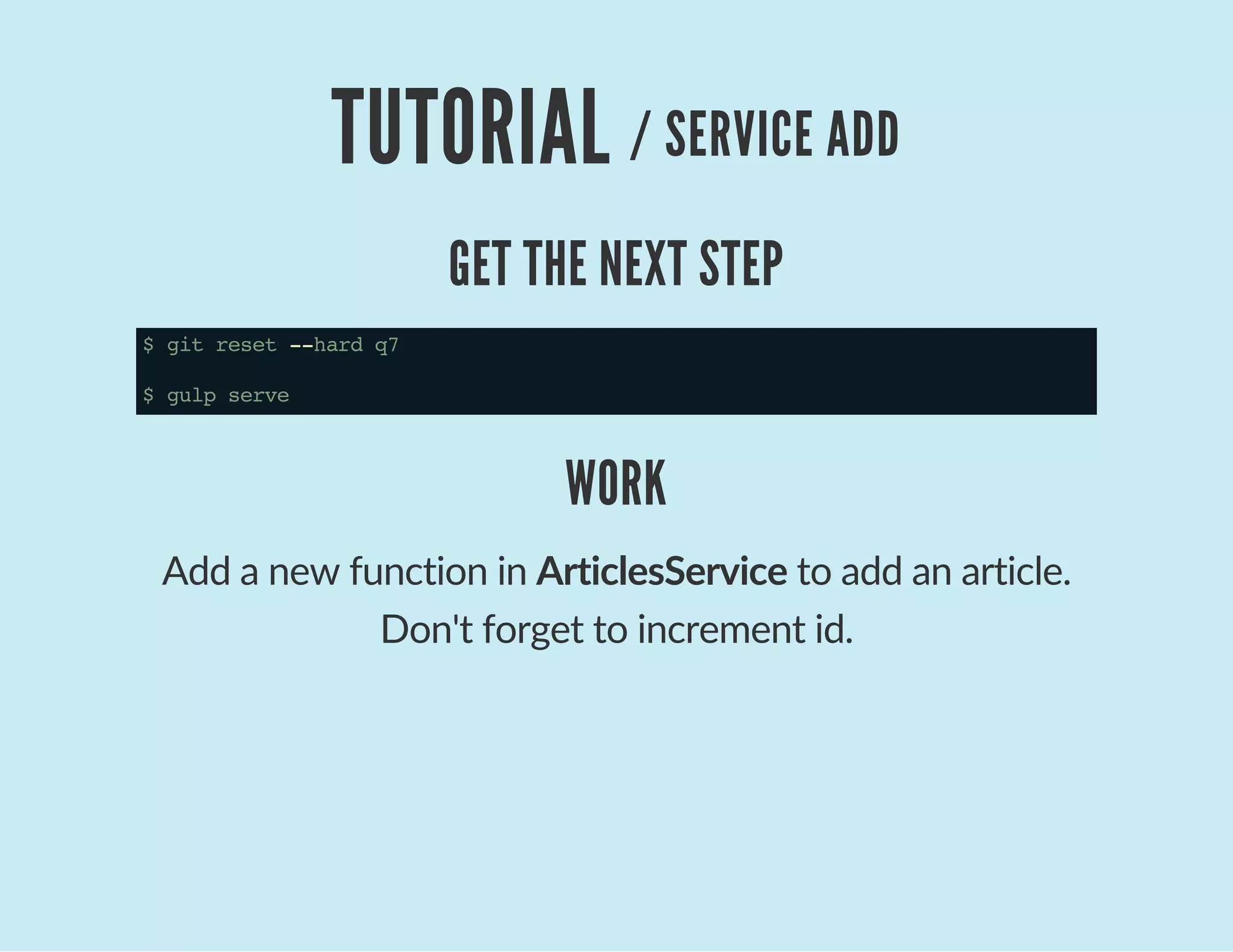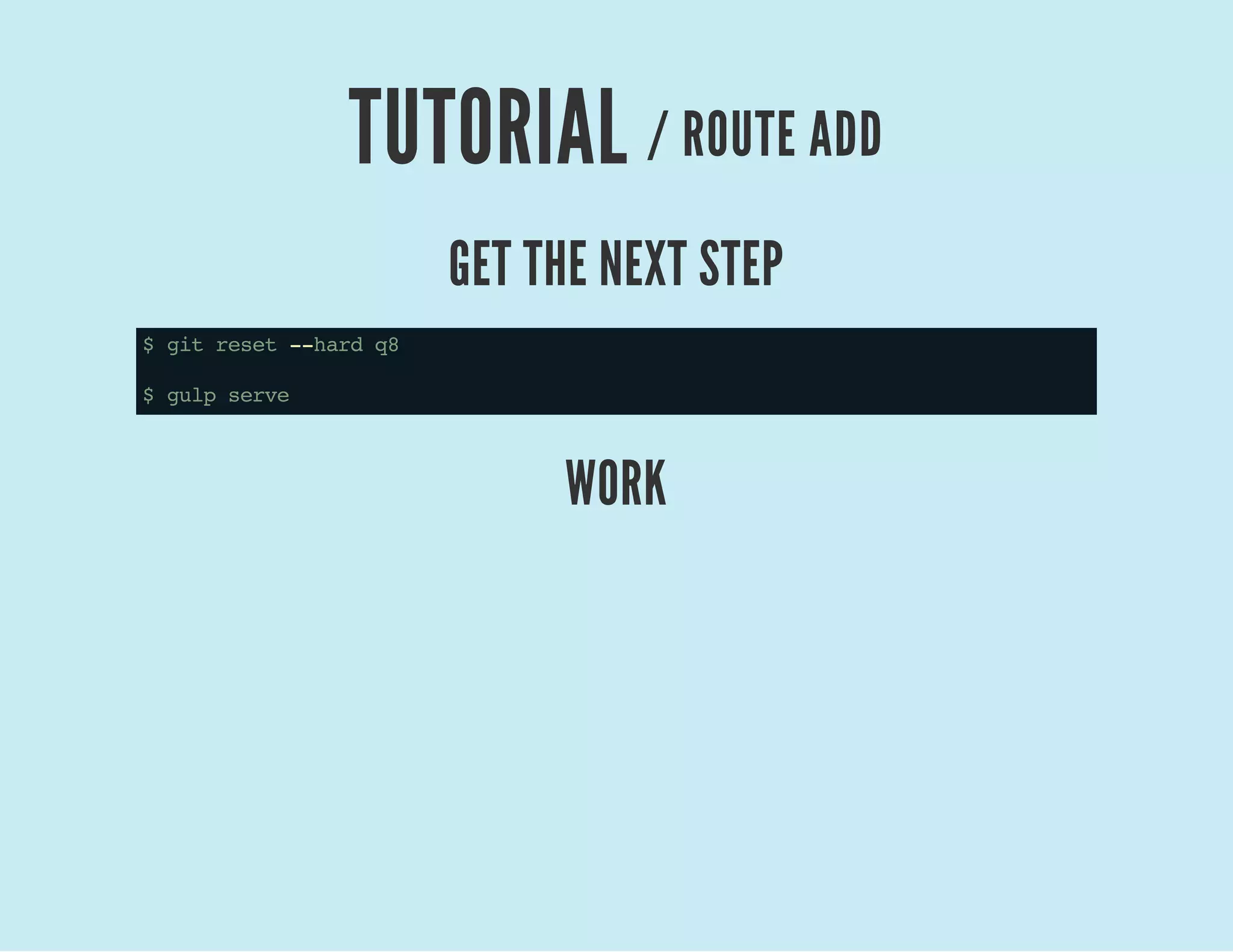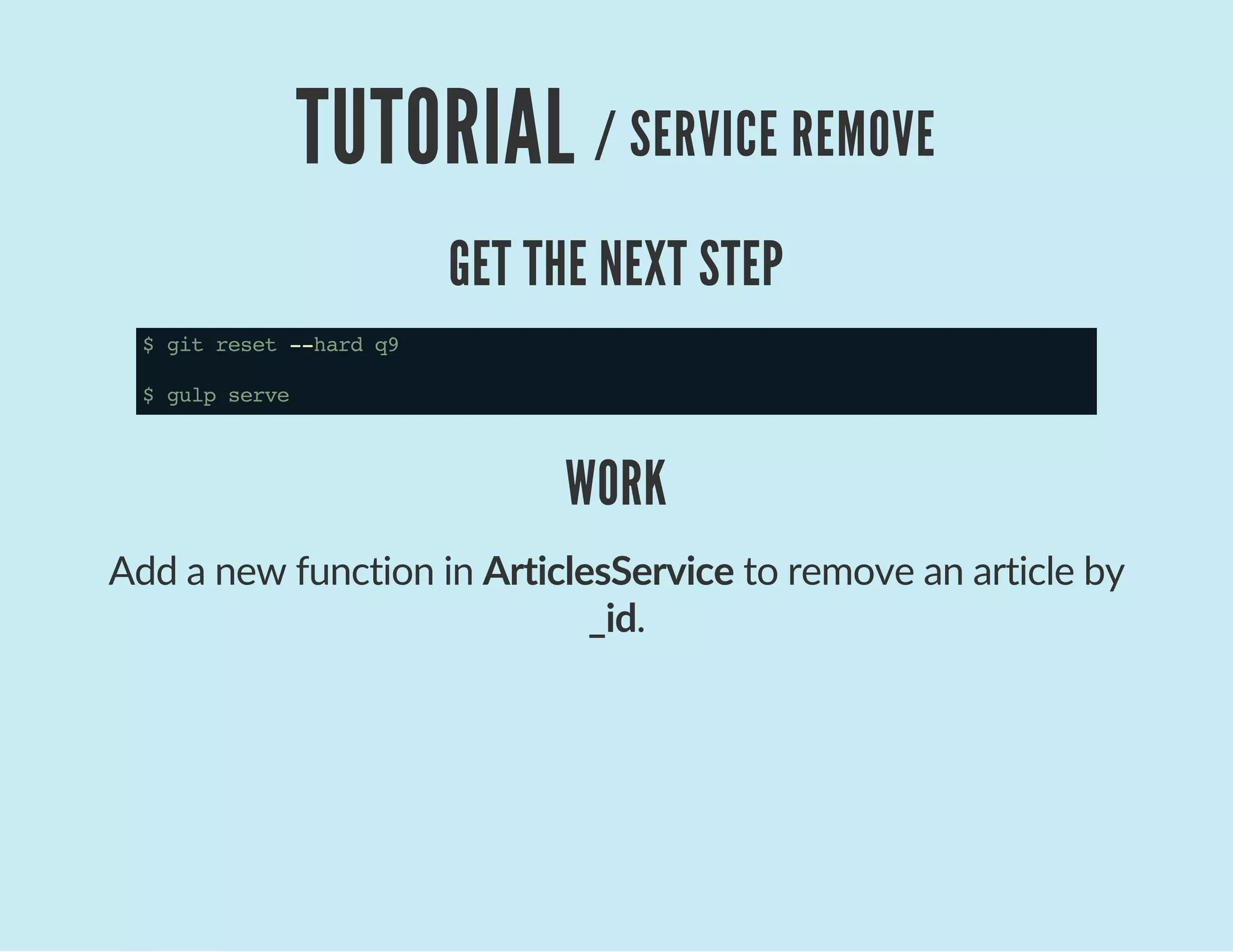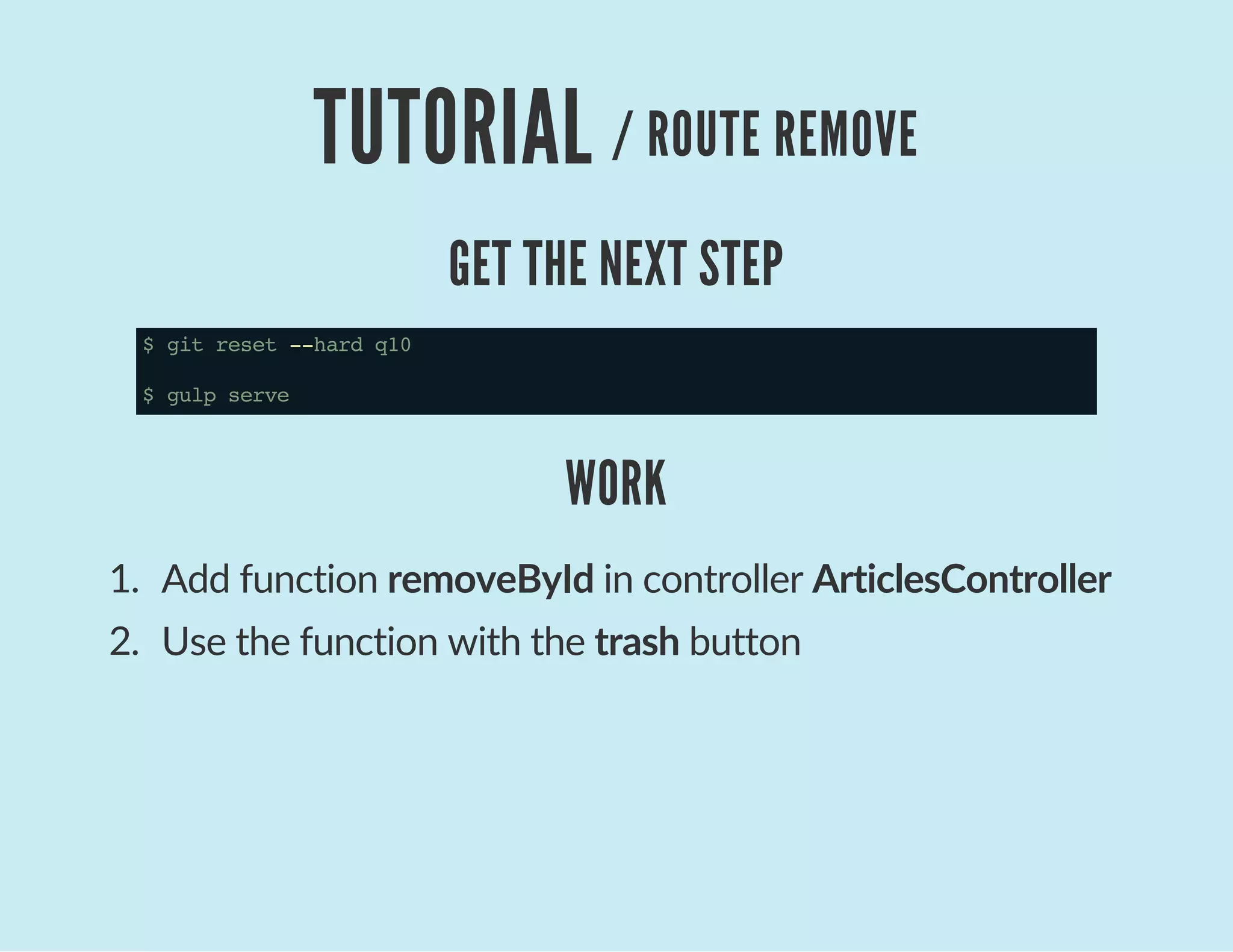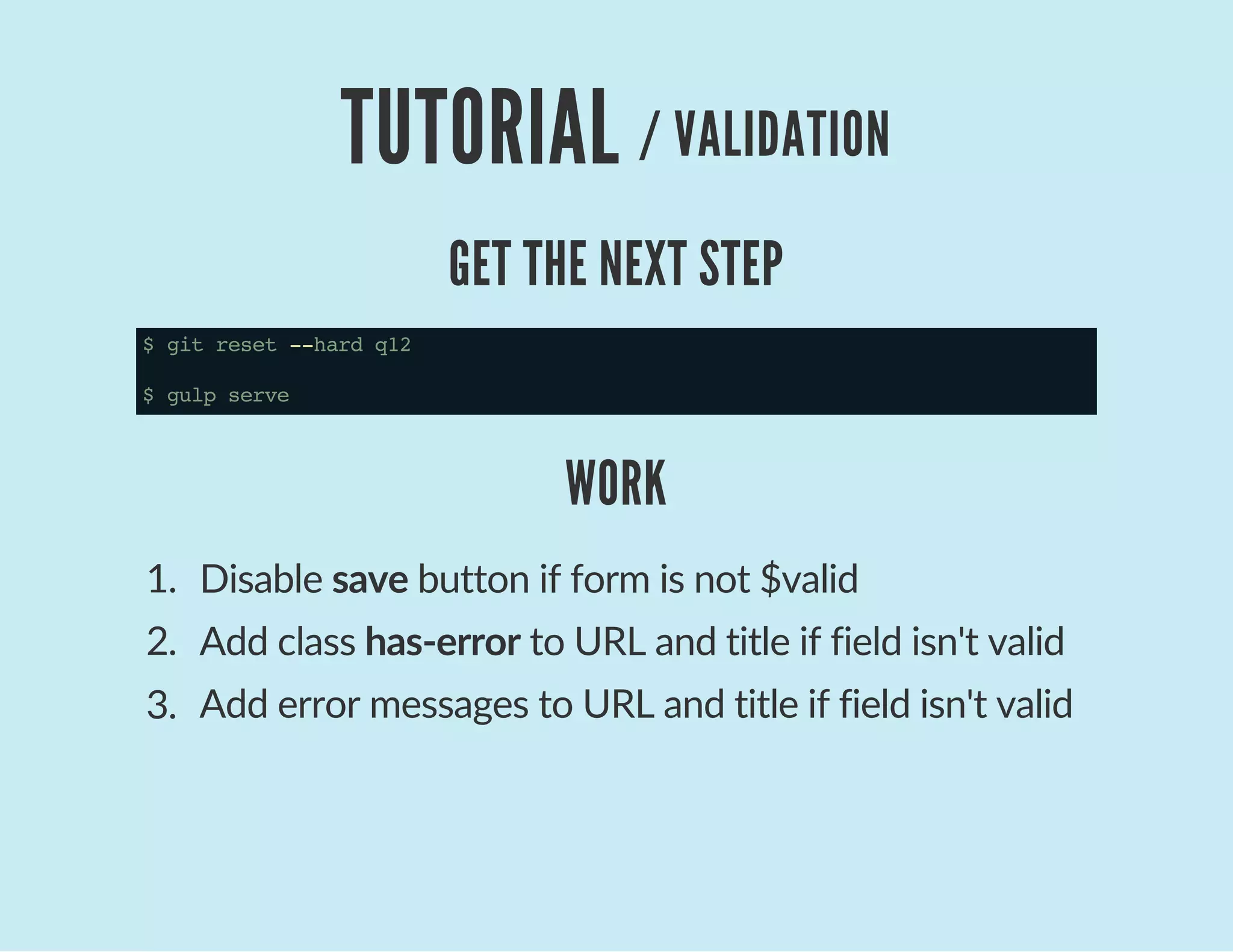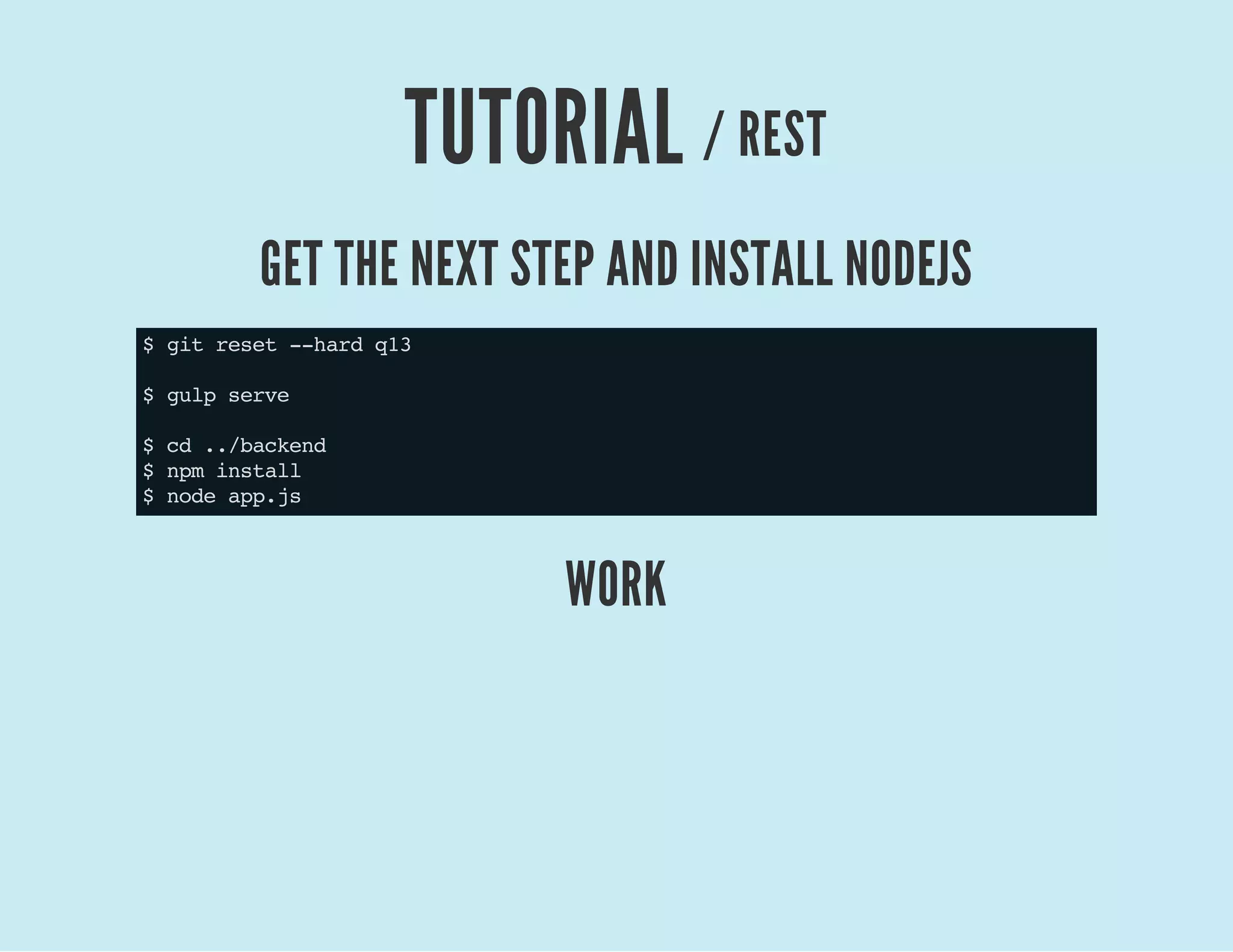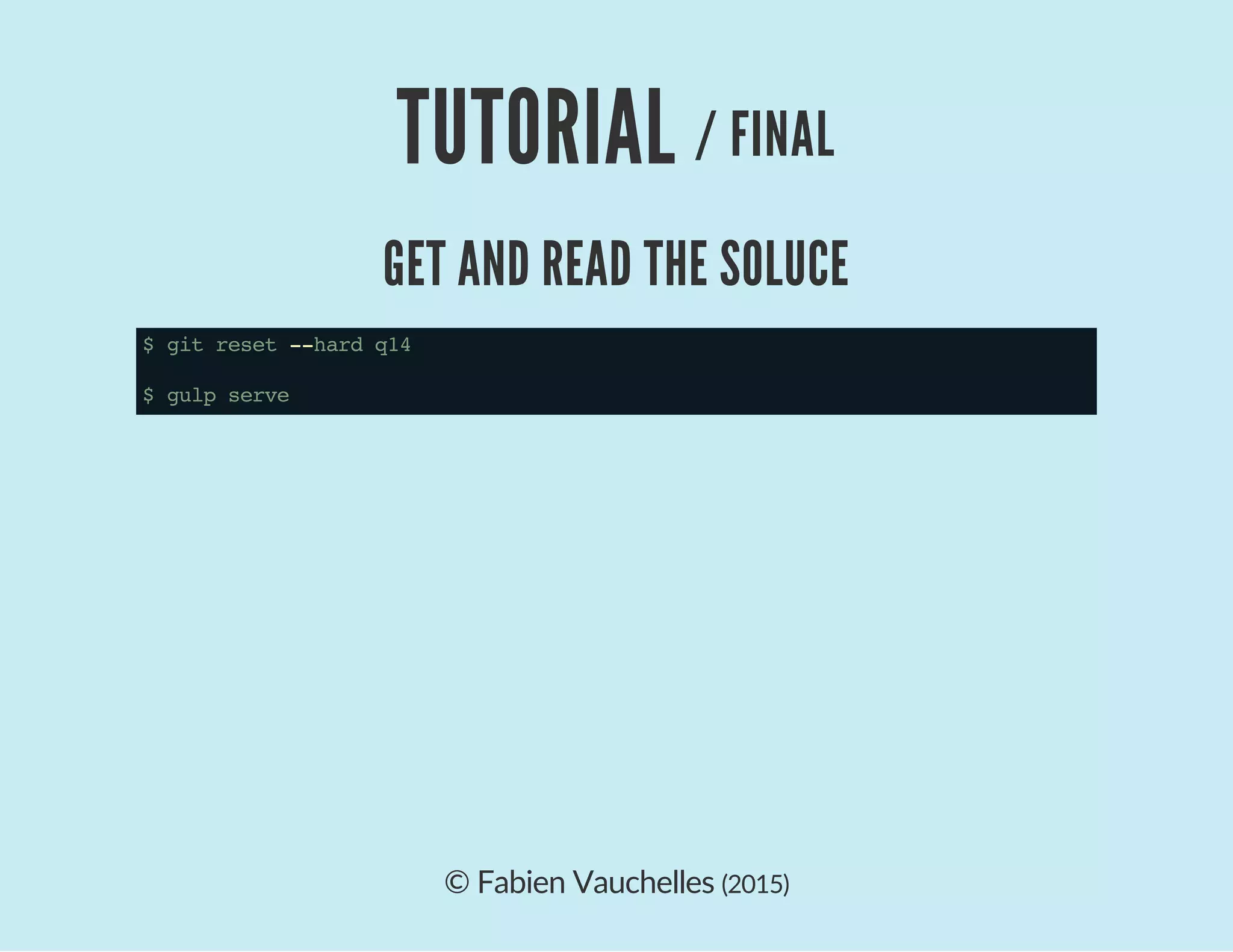This document provides an overview of how to build forms in AngularJS using HTML5, AngularJS directives, validation, and modules.
It begins by showing a basic HTML5 form, then introduces AngularJS forms with two-way data binding. Validation constraints and error handling are added. The form is integrated into an AngularJS module and controller. Finally, it discusses routing and consuming REST APIs with $http requests.
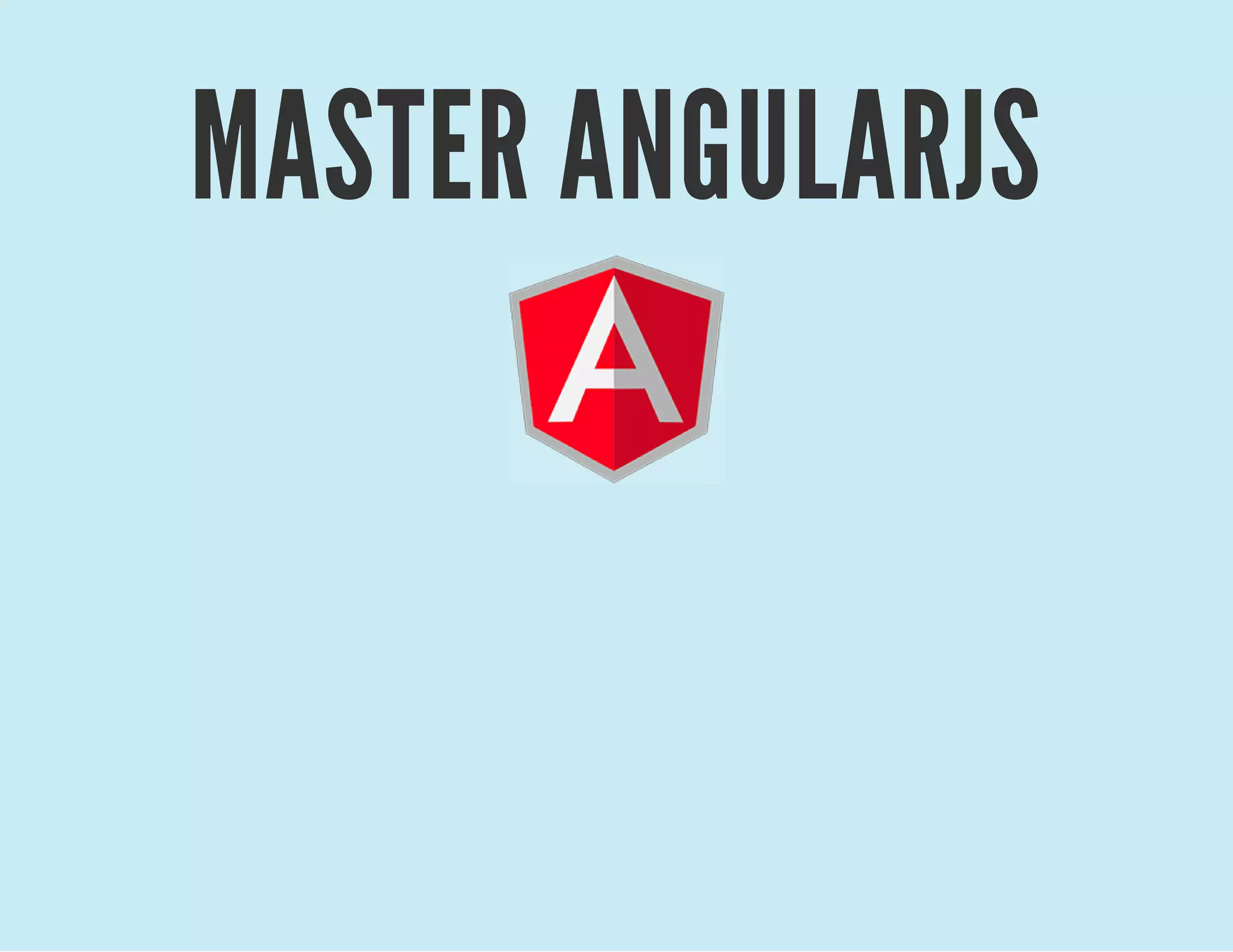
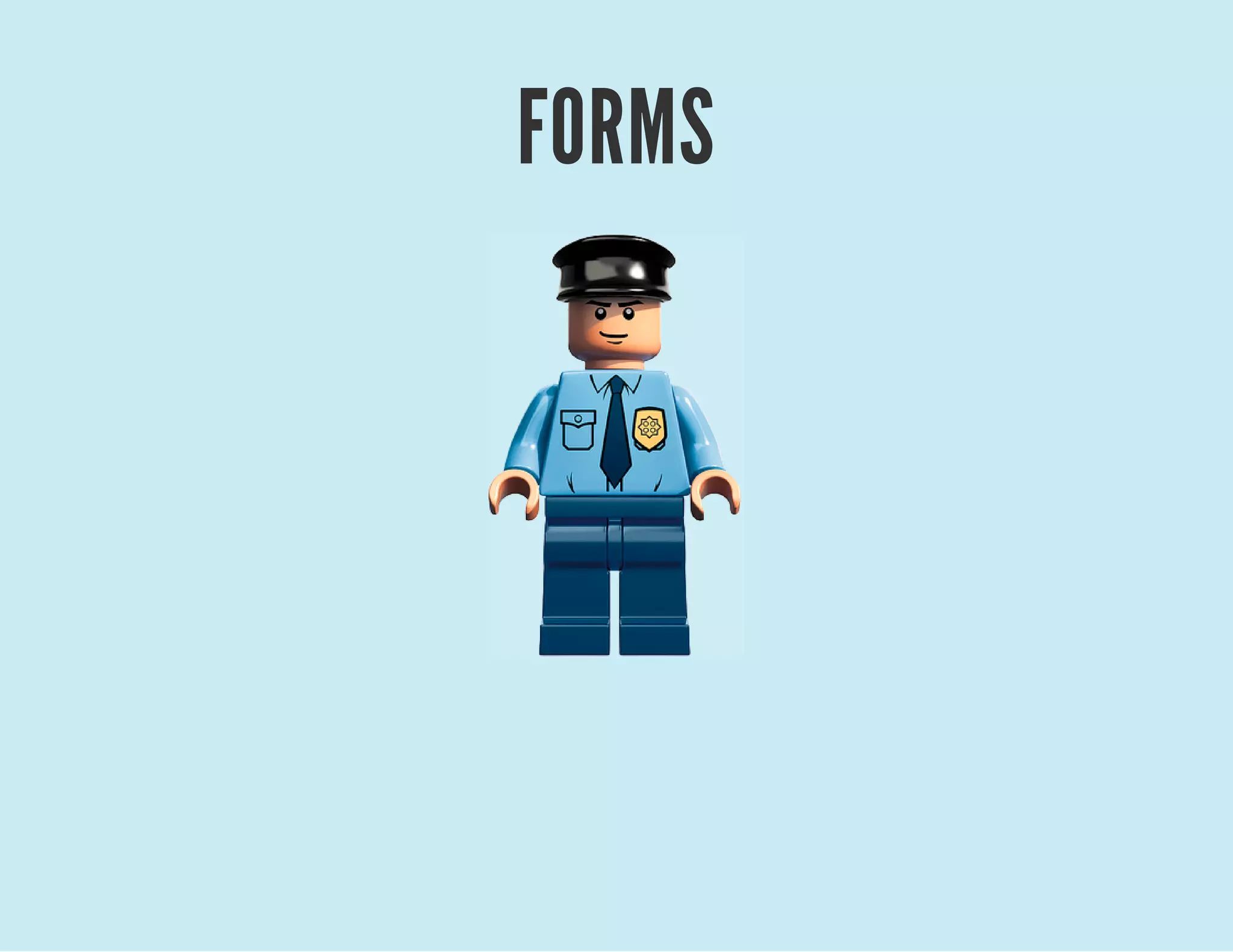
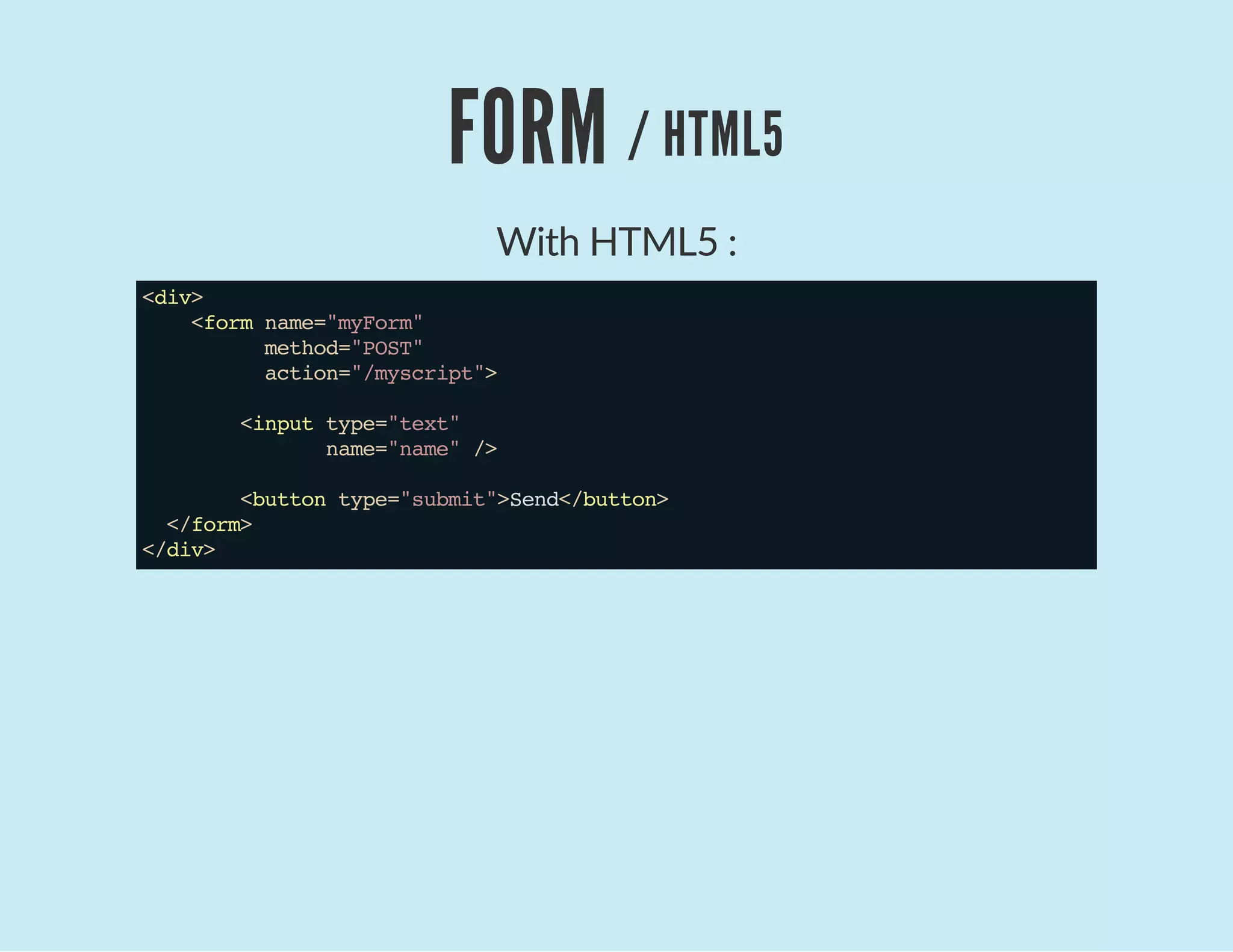

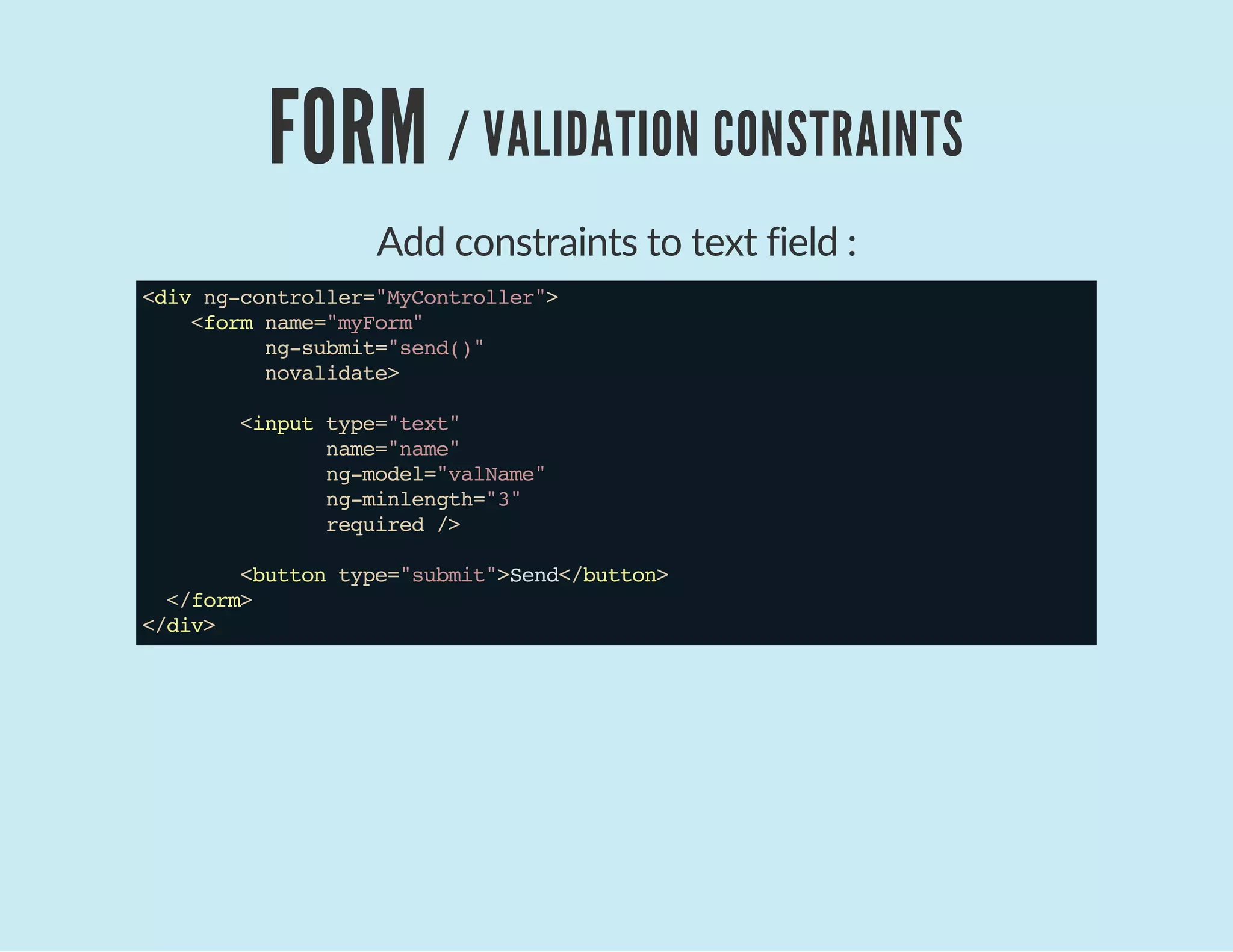
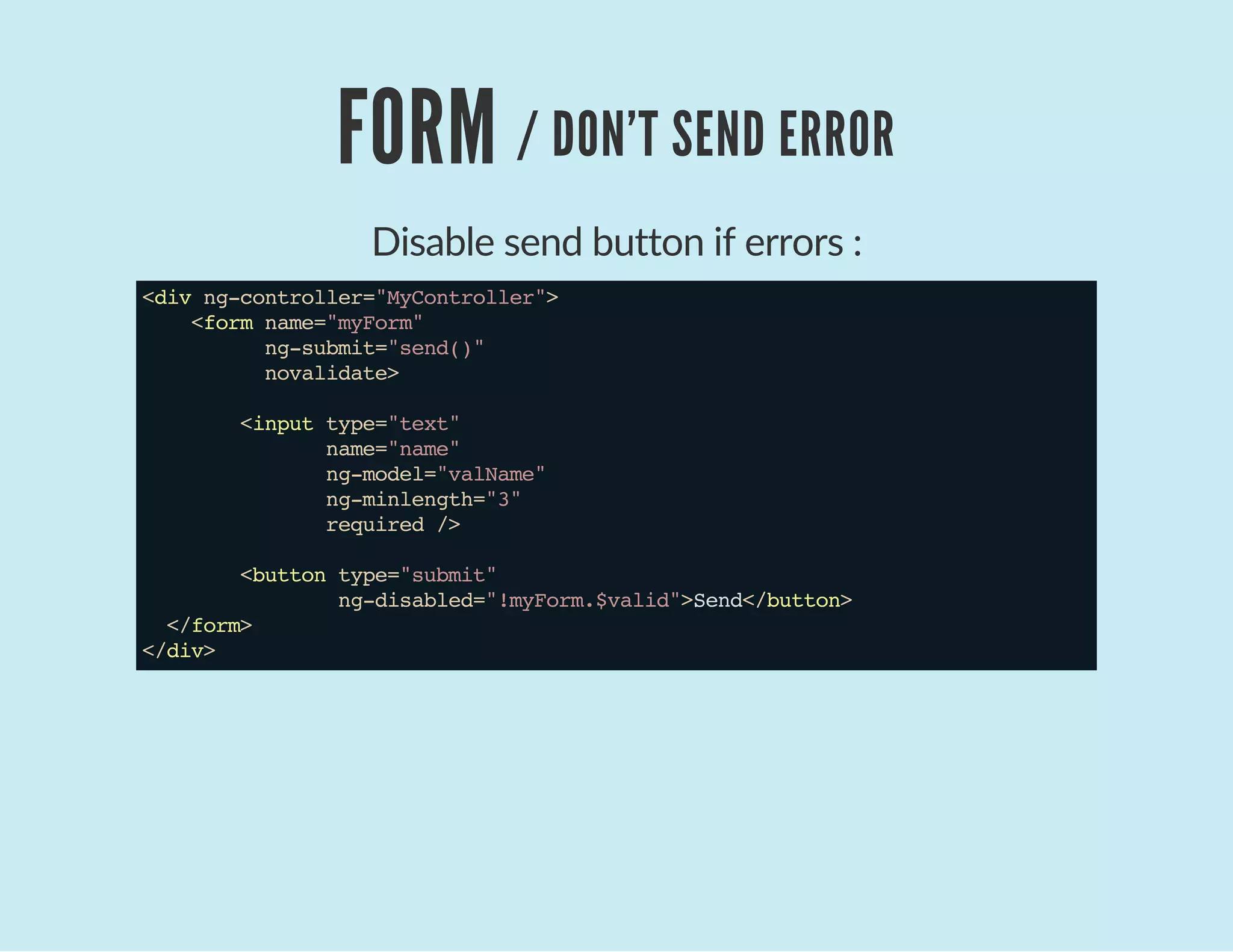

![FORM / MODULE
Include script and module :
<htmlng-app="myApp">
<head>
<scriptsrc="bower_components/angular/angular.js"></script_>
<scriptsrc="bower_components/angular-messages/angular-messages.js"></script_>
</head>
<bodyng-controller="MyController">
//Formhere
<script>
angular
.module('myApp',['ngMessages'])
.controller('MyController',MyController);
//Controller
</script_>
</body>
</html>](https://image.slidesharecdn.com/release20150329-150329150528-conversion-gate01/75/Master-AngularJS-8-2048.jpg)
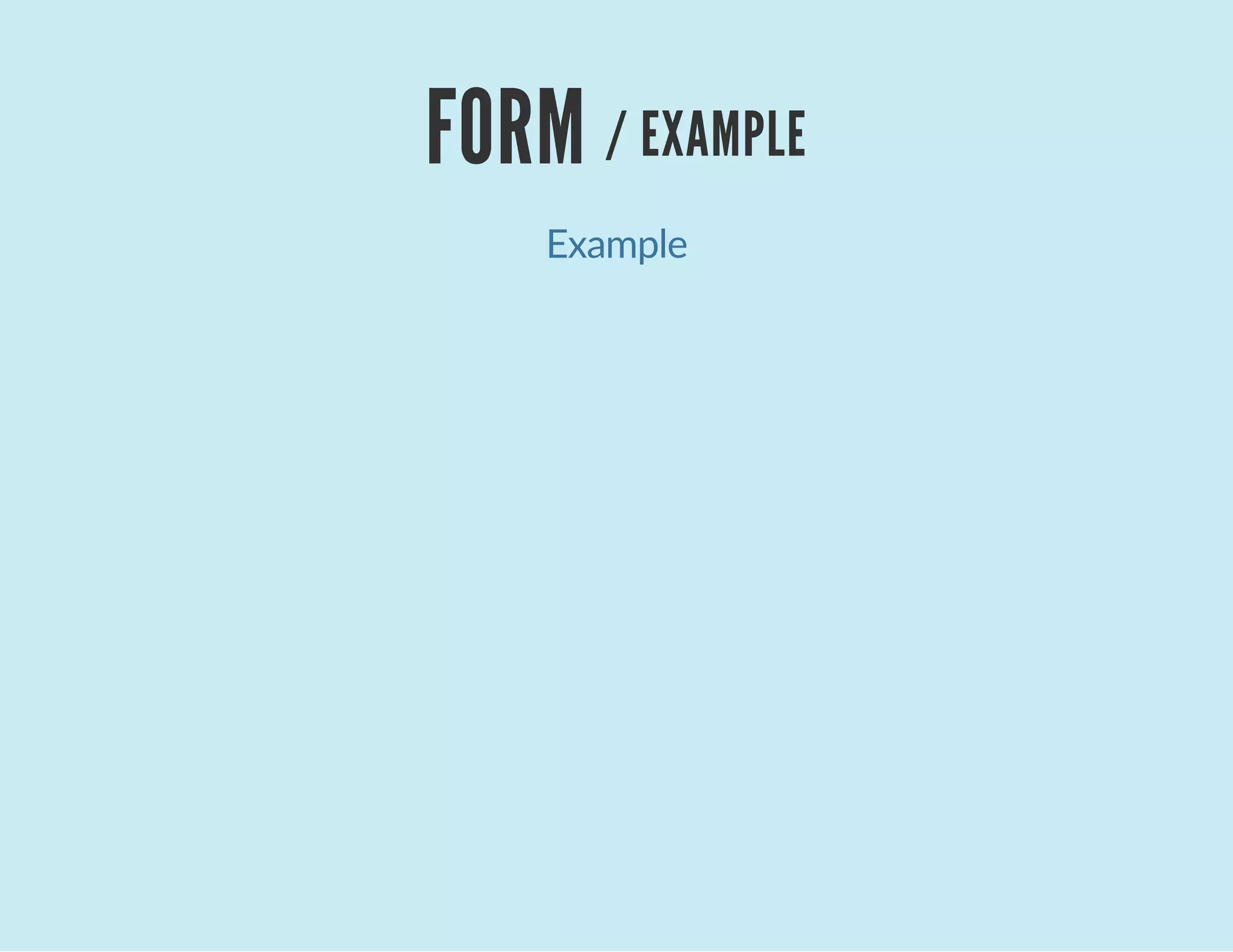
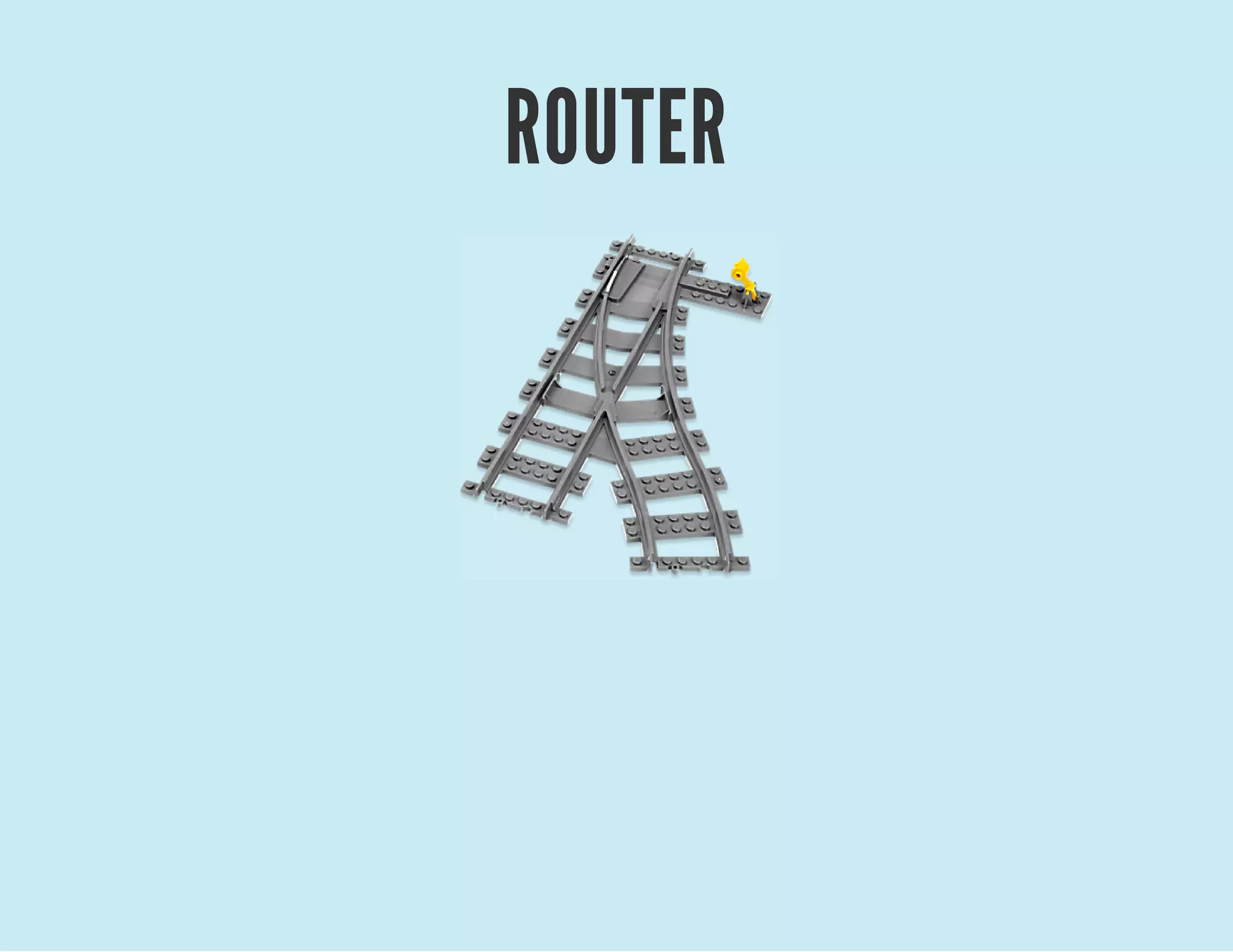
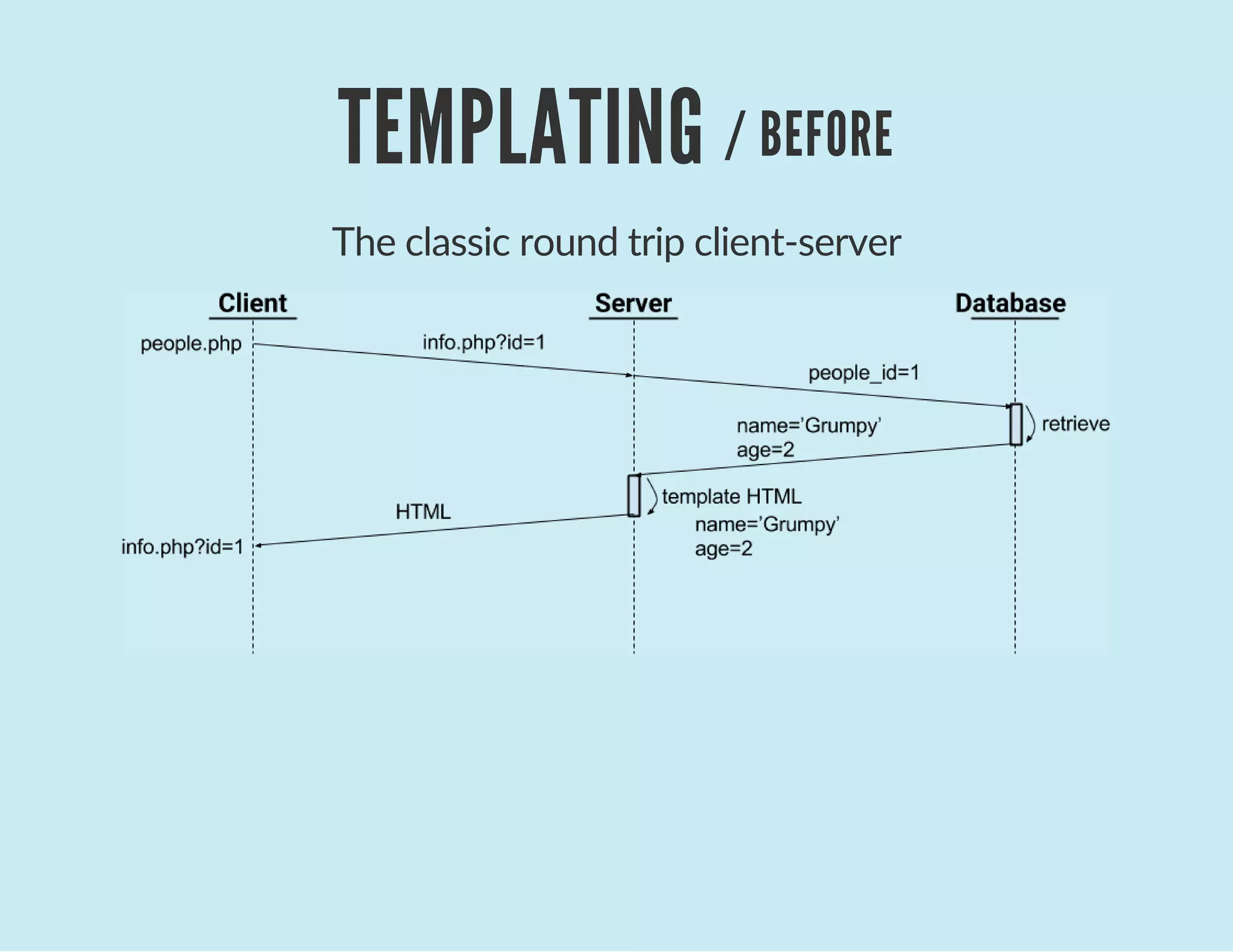


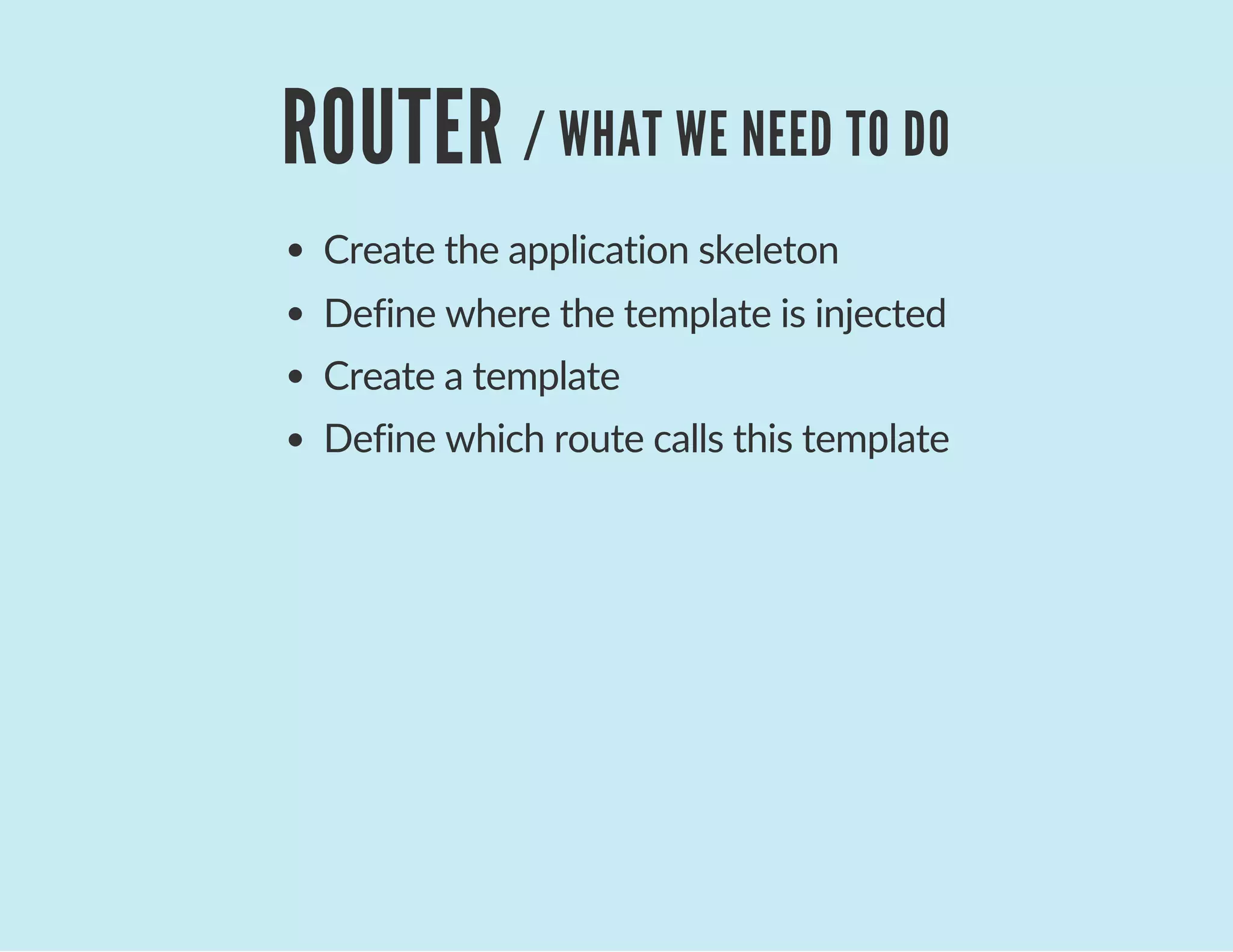

![ROUTER / MODULE
Create the application skeleton :
<htmlng-app="myApp">
<head>
<scriptsrc="bower_components/angular/angular.js"></script_>
<scriptsrc="bower_components/angular-ui-router/release/angular-ui-router.js">
</head>
<body>
//Formhere
<script>
angular
.module('myApp',['ui.router'])
.config(Config);
//Config
</script_>
</body>
</html>](https://image.slidesharecdn.com/release20150329-150329150528-conversion-gate01/75/Master-AngularJS-16-2048.jpg)
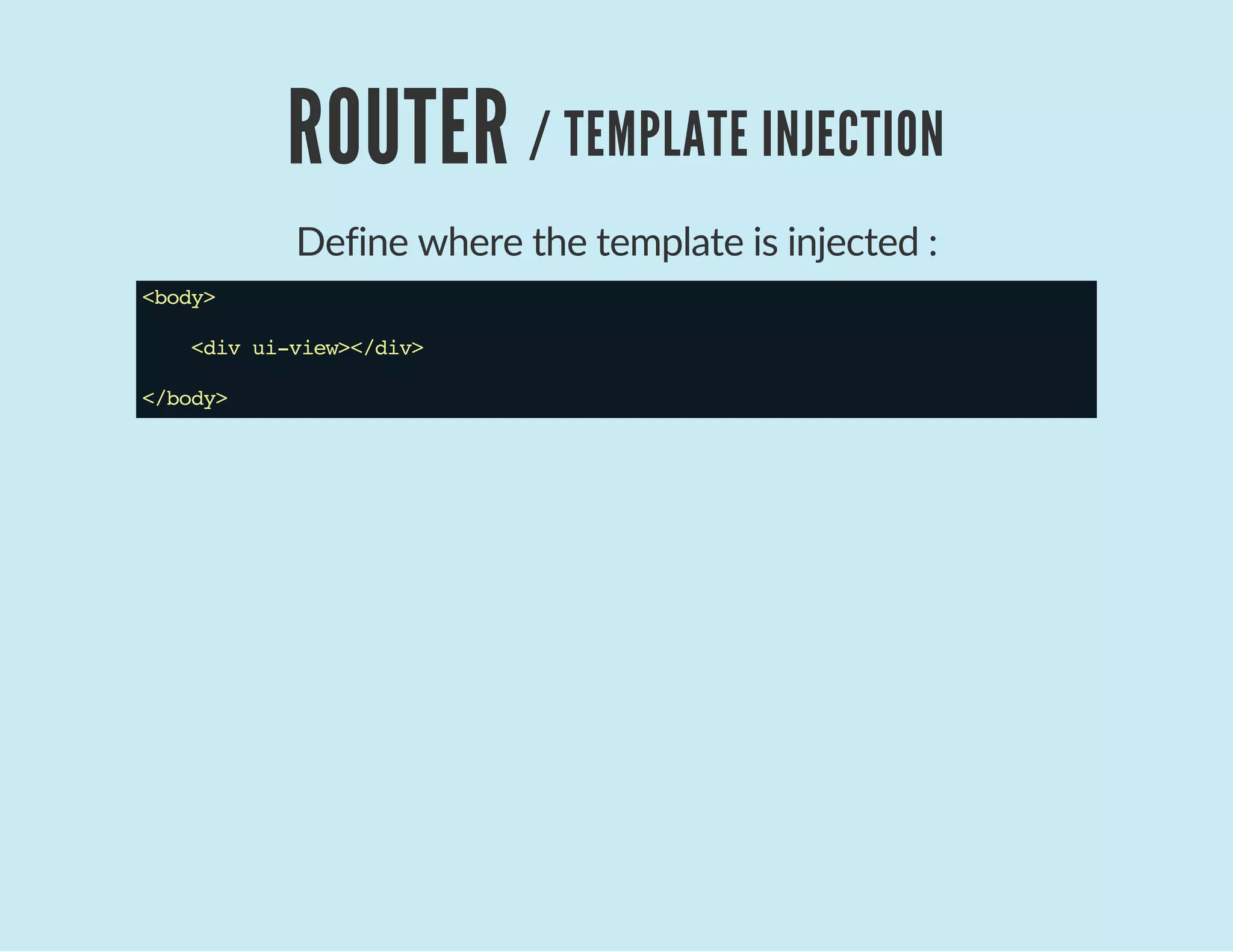
![ROUTER / TEMPLATES & STATES
Create templates and define states
angular
.module('myApp',['ui.router'])
.config(Config);
functionConfig($stateProvider,$urlRouterProvider){
//Firsttab
$stateProvider.state('tab1',{
url:'/tab1',
template:'<h1>Thisisthetabnumber1</h1>'
});
//Secondtab
$stateProvider.state('tab2',{
url:'/tab2',
template:'<h2>Iamthetab2</h2>'
});
//Defaulttab
$urlRouterProvider.otherwise('/tab1');
}](https://image.slidesharecdn.com/release20150329-150329150528-conversion-gate01/75/Master-AngularJS-18-2048.jpg)
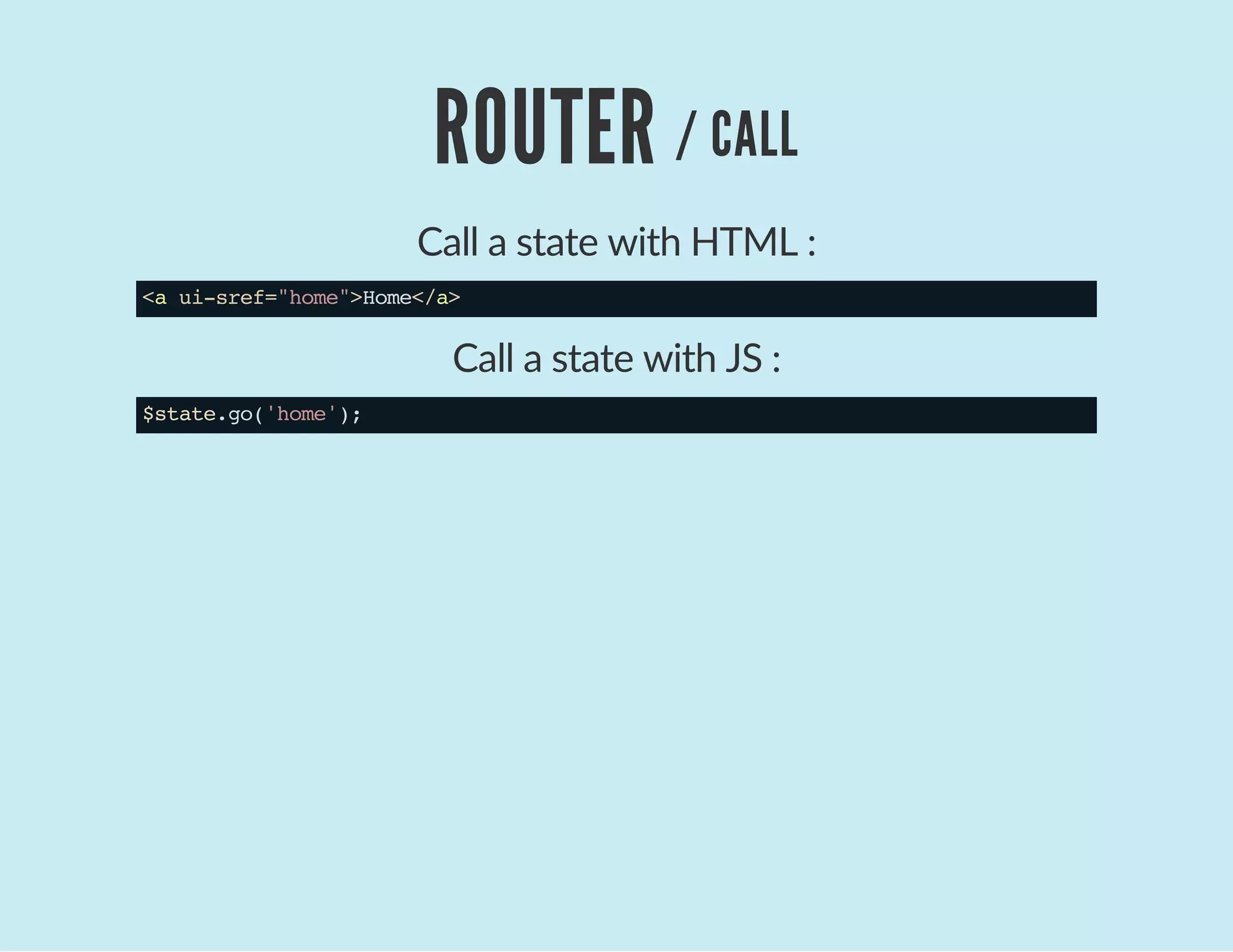
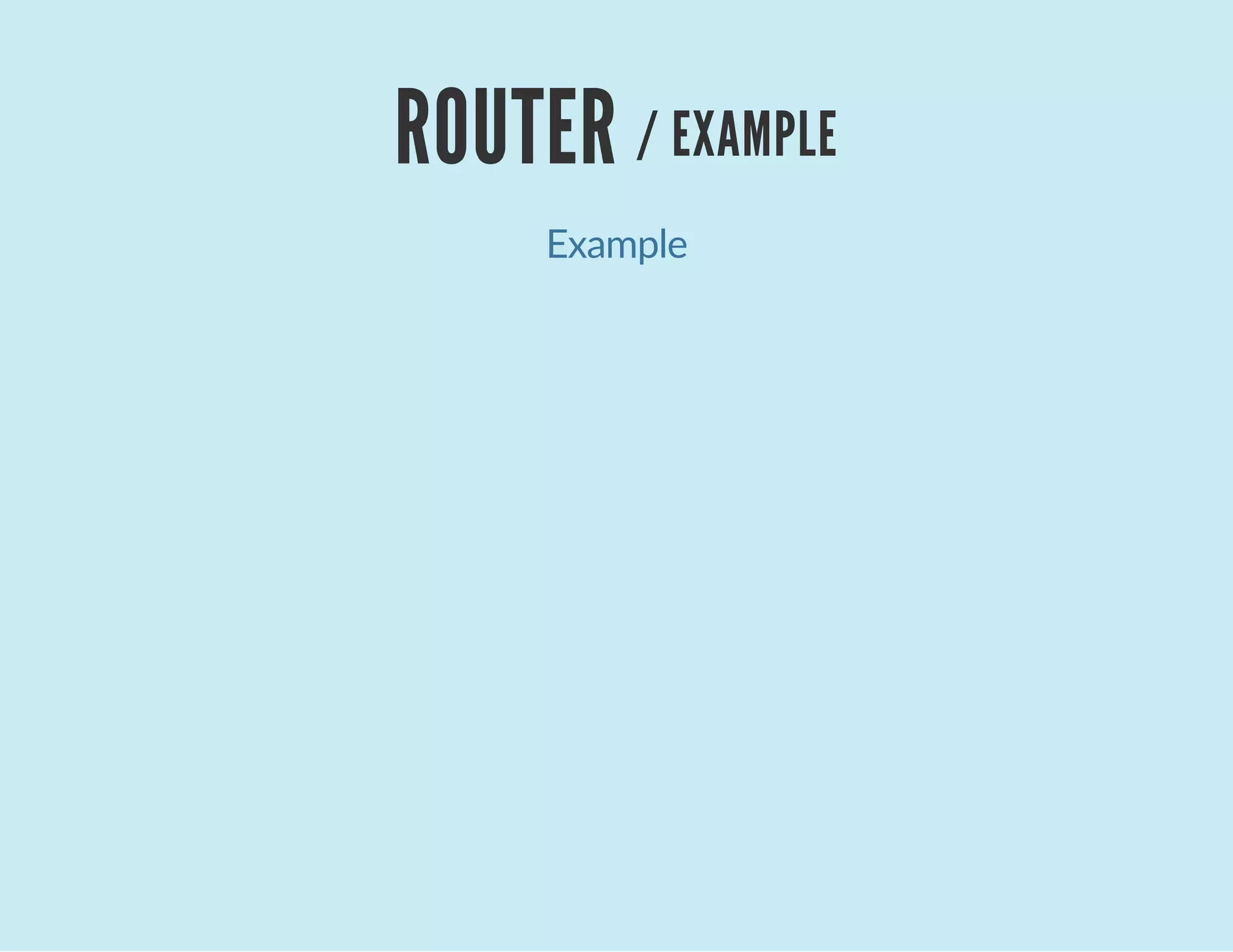
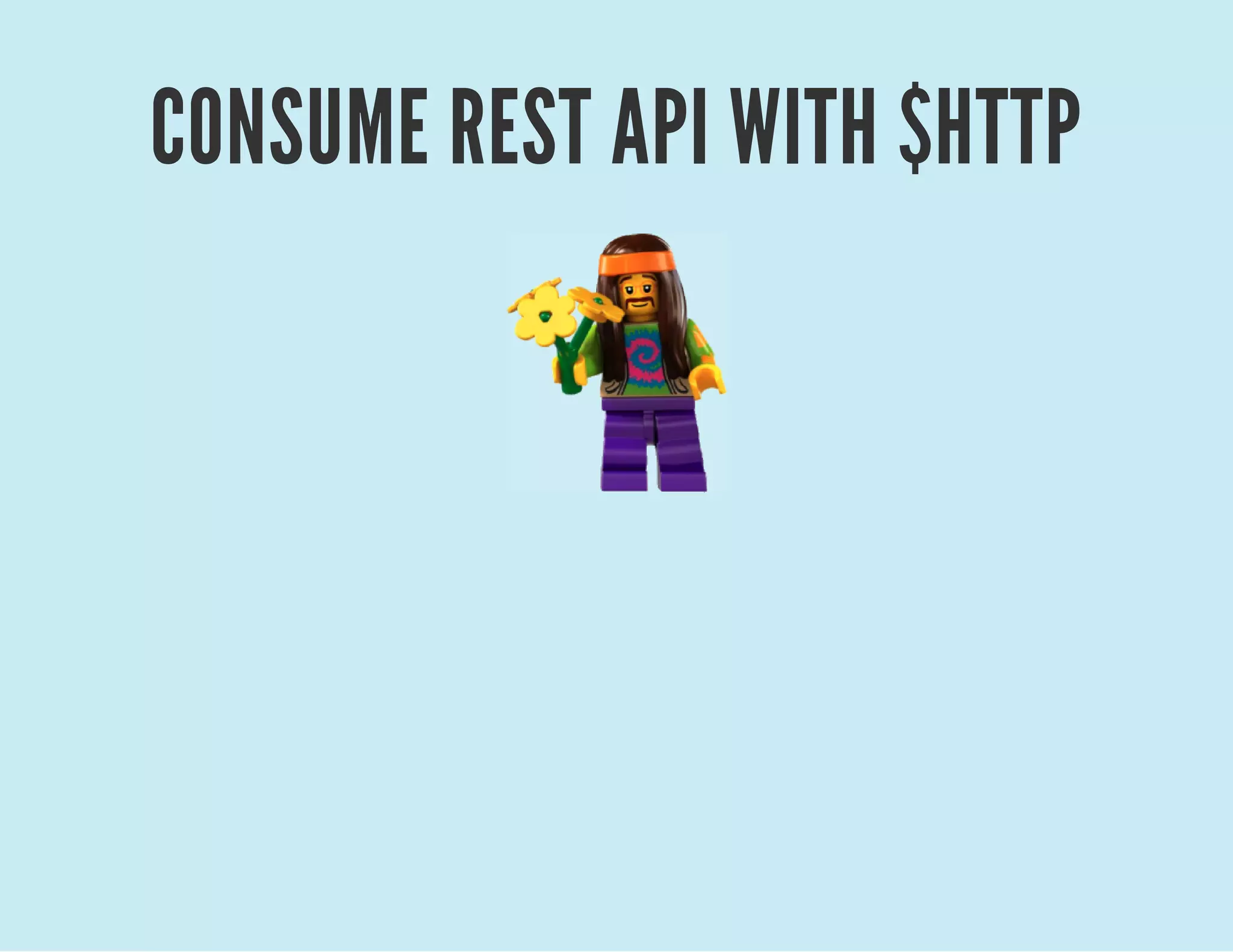
![$HTTP / GET
GET requests are simples !
angular
.module('myApp',[])
.controller('AppController',AppController);
functionAppController($http,$scope){
$http.get('cats.json')
.then(function(response){
$scope.cats=response.data;
});
}
Example](https://image.slidesharecdn.com/release20150329-150329150528-conversion-gate01/75/Master-AngularJS-22-2048.jpg)
![$HTTP / POST
POST requests are simples !
angular
.module('myApp',[])
.controller('AppController',AppController);
functionAppController($http,$scope){
varnewcat={
name:'Winston',
age:3
};
$http.post('/newcat',newcat)
.then(function(response){
alert('created!');
});
}](https://image.slidesharecdn.com/release20150329-150329150528-conversion-gate01/75/Master-AngularJS-23-2048.jpg)
